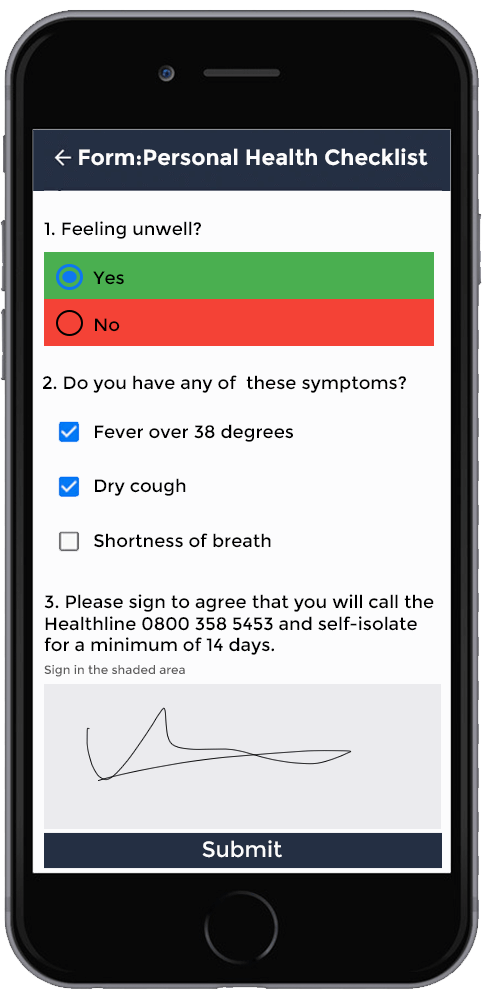Work Health and Safety (WHS) Laws govern the safety of employees on site and while they are already complex to execute, the current pandemic has seen new measures required to ensure the health and safety of everyone.
As construction remains an essential service, control measures are paramount to minimise the risk of exposure to COVID-19. SafeWork Australia has created a comprehensive document to support the industry as it stands the backbone of the economy during this pandemic. Below is a summary of their guidelines.
Physical distancing
- Everyone must be at least 1.5 meters physically apart, this includes workers, clients, visitors on site
- Use other methods of communication such as mobiles phones or radios
- Conduct toolbox and other meetings online, including through an app, where you can. If not, conduct such meetings in wide-open spaces to enable workers to keep the required physical distance of at least 1.5 metres.
- Limit the number of workers onsite through split shifts, office workers working from home and reducing the number of tasks needed to be completed each day
- Create makeshift walkways to support physical distancing
- Limit the number of workers in lifts/hoists
- Postpone non-essential training
- Place signage regarding physical distancing around the jobsite
Access SafeWork Australia’s signage and poster templates here
Health checks and Quarantine
- Monitor the health of workers for COVID-19 symptoms, including fever, flu-like symptoms such as dry coughing, sore throat and fatigue or shortness of breath
- Workers must report on whether they are experiencing any of these symptoms or have been in contact with someone who has or is suspected to have COVID-19
- Workers who display symptoms or have contracted COVID-19 must not be allowed to work until evidence is provided that the virus is gone
Hygiene
Environmental Cleaning
Given that the virus can live on a variety of surfaces and construction work requires regular touching of surfaces and objects, job site cleaning must increase. This includes the cleaning and disinfecting of:
- Plant
- Equipment
- Lifts/hoists
- Handrails and doors
- Personal items such as tools, glasses and phones
- Site amenities such as site sheds, toilets, drink fountains, vending machines and lunchrooms
Each person who is cleaning should wear gloves and wash their hands or use alcohol-based hand sanitiser before and after wearing gloves. Additional PPE such as gloves and alcohol-based hand sanitiser should be made available throughout the construction site.
Worker Hygiene
Workers must wash their hands with soap and water for at least 20 seconds before and after eating as well as after going to the toilet.
Additional hygiene measures include:
- Covering coughs and sneezes with an elbow or a tissue and then immediately disposing of tissues properly
- Using alcohol-based hand sanitisers with at least 60% ethanol or 70% isopropanol as the active ingredient
- Avoid touching their face
- Avoid handshakes or any other close physical contact
- Refrain from spitting at all times
Washroom facilities on site should have adequate access to soap, water, toilet paper and alcohol-based sanitiser.
Deliveries and other contractors attending the workplace
- Non-essential visits to the workplace should be cancelled or postponed
- Necessary visitors should be given clear instructions of your requirements while they are on site
- Workers attending to deliveries and contractors should be minimised
- Alcohol-based hand sanitiser should be available to workers physically handling deliveries
- Request truck drivers to remain in their vehicle during deliveries
- Use contactless methods to communicate with workers
- Use electronic paperwork where possible, to minimise physical interaction.
Communication
- Use contactless methods such as mobile phones to communicate with your workers wherever possible
- Where possible, set up alternatives to requiring signatures. If a pen or other utensil is required for signature they must be sanitised before and after use.
- Employers should inform workers all WHS control measures in place to ensure that they are being abided by to reduce the risk of COVID-19
- Workers must be well informed to know when to stay away from the workplace, what action to take if they become unwell and what symptoms to be concerned about.
The Solution
Safe Work Australia stresses the need to uphold physical distancing on the jobsite and promoted the use of digital technologies to replace toolbox talks, face to face communication and jobsite paperwork.
Assignar is the operations platform built for sub and self-perform contractors. The mobile app enables contractors to abide by physical distancing rules, embrace an alternative method to face communication whilst removing paperwork from the jobsite.
distancing rules, embrace an alternative method to face communication whilst removing paperwork from the jobsite.
Assignar’s mobile app allows all important information to be shared in real-time. For example, workers no longer need to go to the yard or depot to collect job packs, site plans, SWMS or timesheets. All jobsite information is easily accessible via the mobile app.
In addition, workers can submit their timesheets via their phone, with each submission date and time-stamped with geo-location. Safety forms and toolbox talks can be linked to a timesheet so that workers cannot submit their timesheet until they have completed the compulsory safety forms.
Assignar’s operations platform is cloud-based which means your office workers can work remotely and workers on site can conduct remote inductions, digital sign-ins and completely necessary safety forms without sharing pens and paper and having to be in close proximity to their peers.
Learn how other sub and self-perform contractors are using Assignar to tackle COVID-19.
